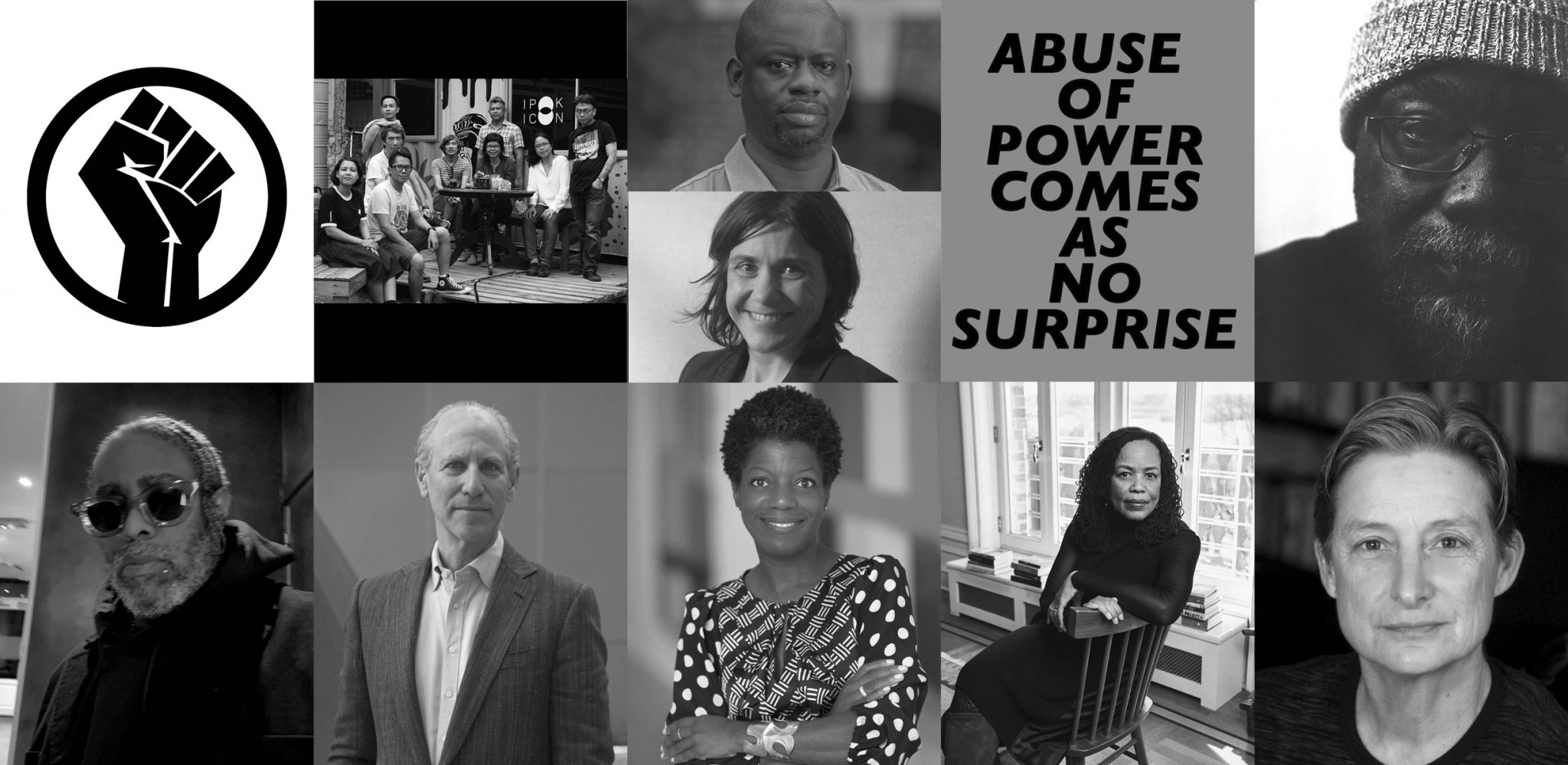The list reflects the impact of COVID-19, social justice movements and non-Western art scenes on the structures of the global artworld
Black Lives Matter takes number 1 position in the 19th edition of the ArtReview Power 100, the annual ranking of the contemporary artworld’s most influential people and movements.
See the full list online and in the December issue of ArtReview.
In a period of social and cultural upheavals, the social justice movement’s unprecedented influence is signalled not only by its overarching position on the list – and this is the first time a movement rather than an individual has been at the top of the Power 100 – but also in the shaping of this list. It is followed by Indonesian collective ruangrupa, curators of documenta 15, and advocates of collective and collaborative practice, while at number 3 are academics Felwine Sarr & Bénédicte Savoy, champions of museum restitution. The #MeToo movement is at number 4, and philosopher Fred Moten is number 5.
First published in 2002, ArtReview‘s Power 100 is the most established and widely circulated annual ranking of influence in the contemporary artworld. MoMA director Glenn D. Lowry topped the list in 2019, gallerist David Zwirner in 2018 and artist Hito Steyerl in 2017.
While this year the COVID-19 pandemic has tested the resilience and solidarity of societies across the globe, and the environmental crisis continues to go unmanaged, it is the long-standing issues concerning racial justice and equity that have come to dominate public consciousness. In the wake of the killing of George Floyd in Minneapolis in May, protests swept across the world. In the artworld, the power of the Black Lives Matter (BLM) movement has impelled and accelerated change at every level: in the resurgence of statue-toppling in the US and across Europe, as campaigners seek to redress injustices of the historical record; in the visibility of Black contemporary artists; in awards and appointments; in the rush by galleries to diversify their rosters; in museums rethinking who they represent and how they do it. Both an explicit movement and a dispersed idea, BLM has come to symbolise a global reckoning on racial justice and a paradigm shift in contemporary culture.
The newly energised focus on social justice and diversity brings many new entries to the list, with 46 of the names appearing here for the first time, across 39 new entries, the highest turnover in the past 15 years: director of the philanthropic Ford Foundation Darren Walker (11) has consistently directed his organisation’s vast wealth towards redressing underrepresentation in cultural organisations and civil society; scholar Saidiya Hartman (9) has influenced a recent generation of artists with her work on Black history and gender, and the importance of gender politics underpins the recent writings of Legacy Russell (100); while French school Kourtrajmé (80) opens up the elitist world of art and cinema to underrepresented voices via tuition-free training programmes.
Global issues of political and climate justice, meanwhile, are the foundations of the work of collectives Forensic Architecture (14) and Feral Atlas (15). In a year in which the artworld’s established structures have proved to be less than stable, the collaborative, improvised and more rapidly responsive structures of the global south and areas outside of the traditional centres of artworld activity are also increasingly influential: be it the Dhaka Art Summit, founded and run by Nadia Samdani, Rajeeb Samdani & Diana Campbell Betancourt (41), Hungary’s anti-institutional OFF-Biennale, founded by Hajnalka Somogyi (96) or the Manila-based artist-run space Green Papaya Art Projects (99), which closes this year. And faced with the economic ravages of the pandemic on the precarious livelihoods of many artists, the list notes the commitment to supporting artists shown by individuals such as Matthew Burrows (37) in the UK, and Cosmin Costinas (38) in Hong Kong.
The list is put together by a network of approximately 20 artworld insiders (and outsiders) from around the world, in a year in which the experiences of contributors to this list have diverged more than ever: whether it concerns elections and racial injustice in the US or Europe, extrajudicial killings in the Philippines, border disputes or the suppression of free speech in Hong Kong and many other places around the world. This year’s list includes a greater emphasis on the circulation of ideas and values (about justice, equality, ways of living, our relationship with the environment and basic human rights, to name just a few), and the way in which they, as opposed to works by individual artists or artist groups, are changing how we think about and engage with art.
ArtReview’s Power 100 – the annual ranking of the most influential people in art – is out now
